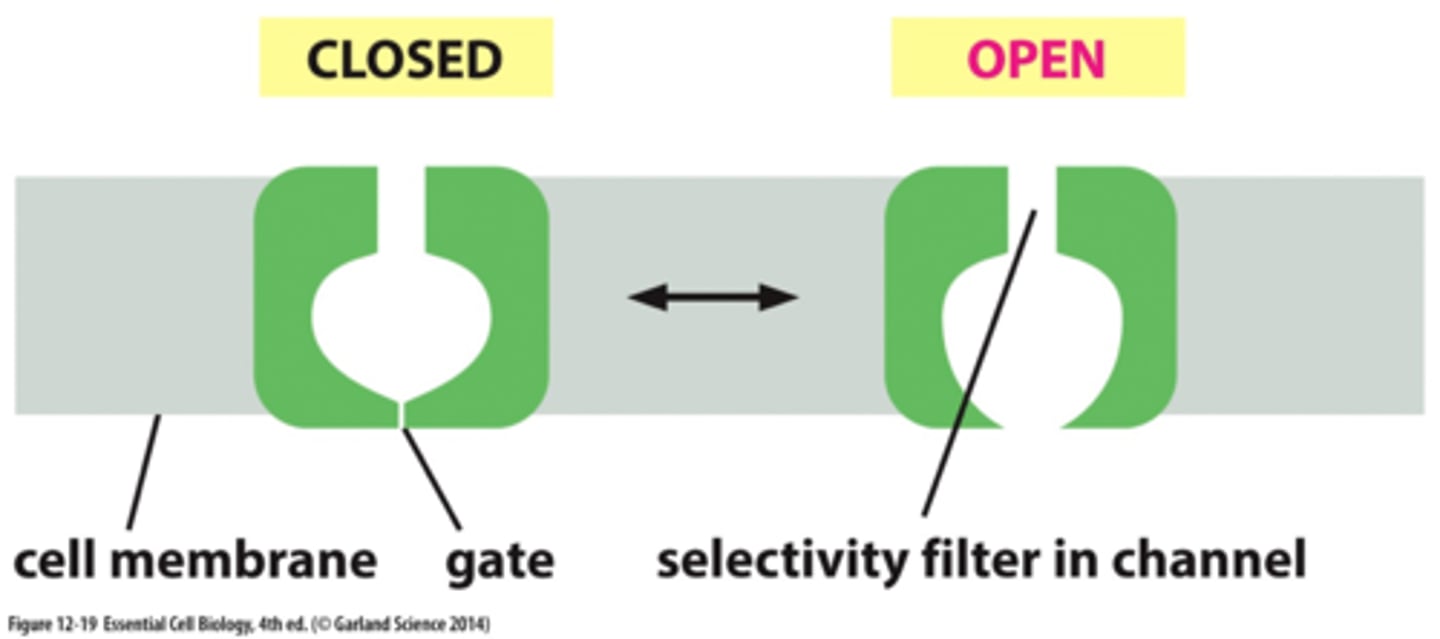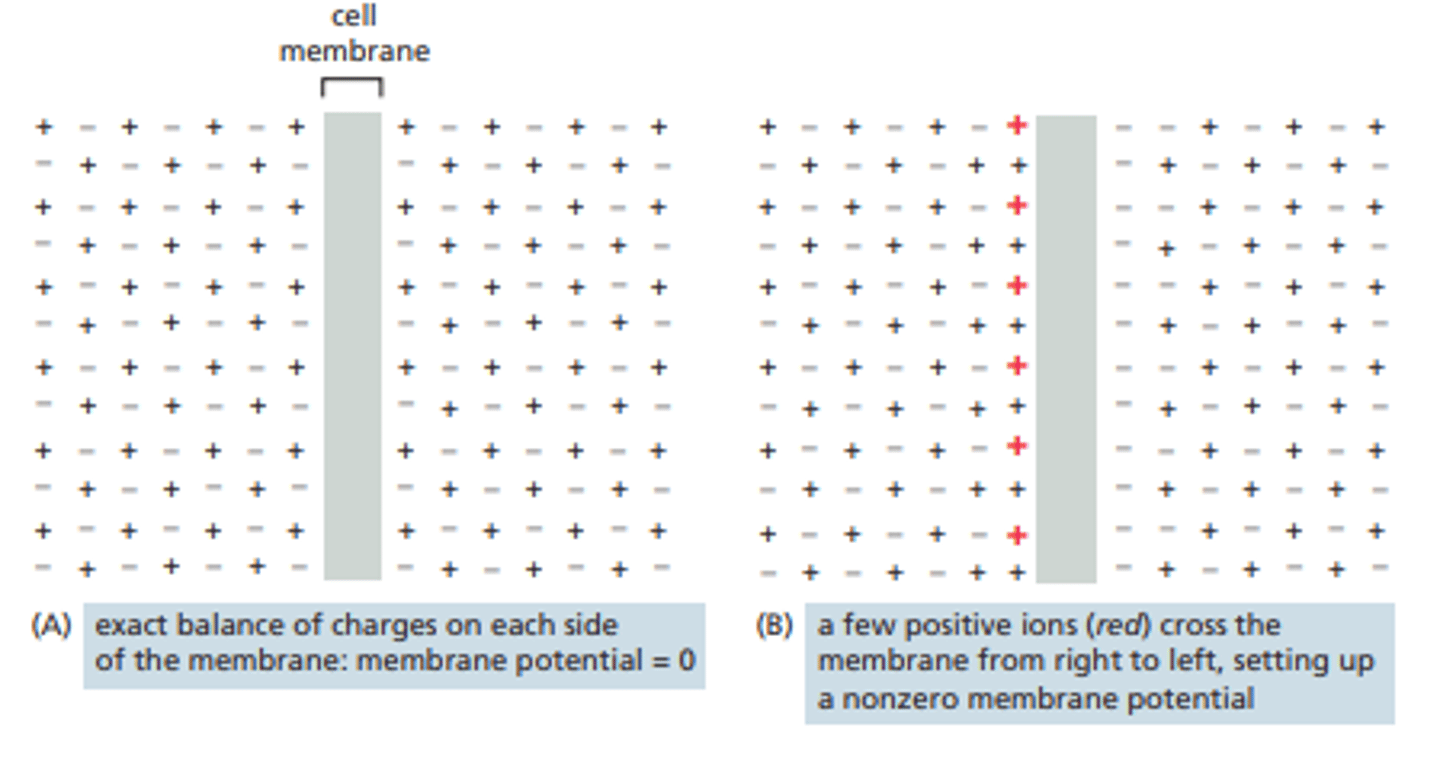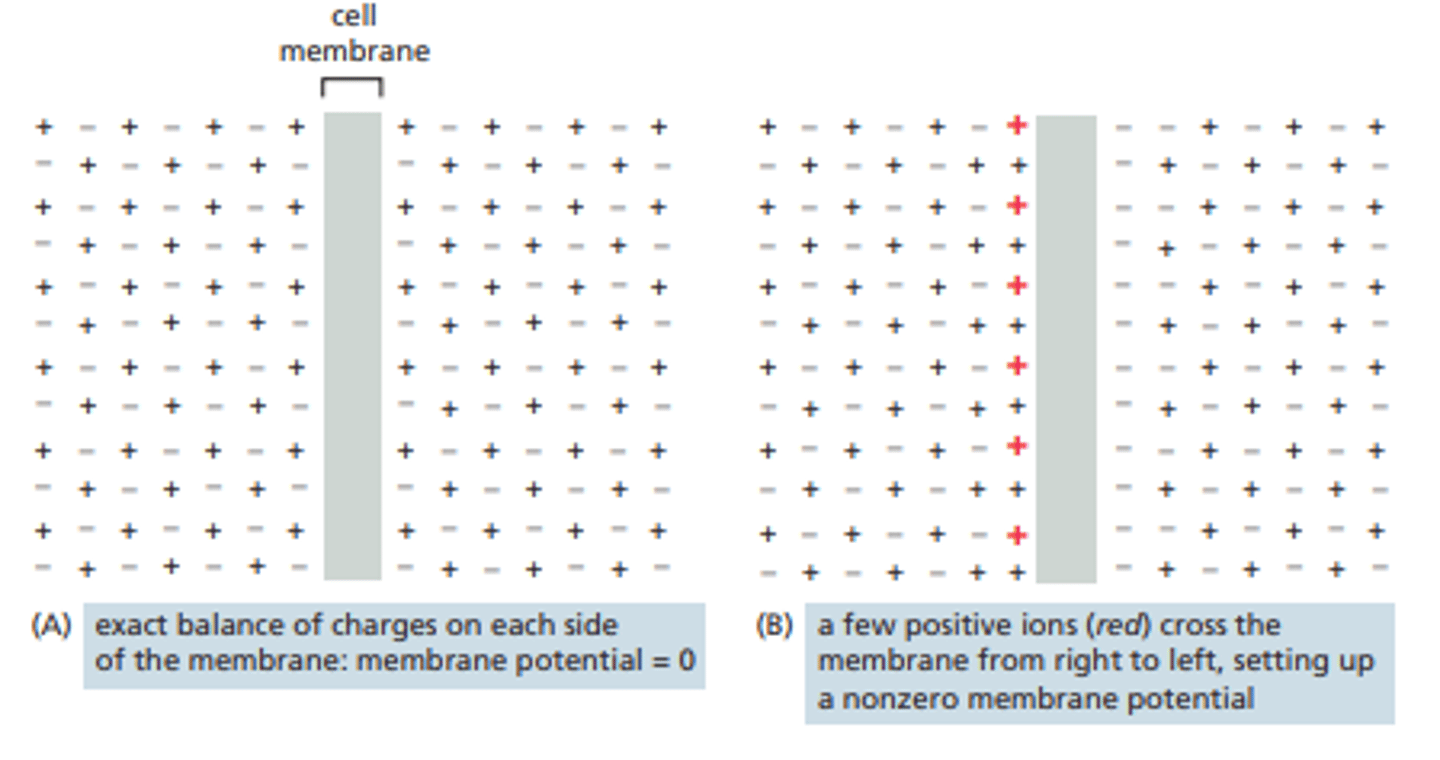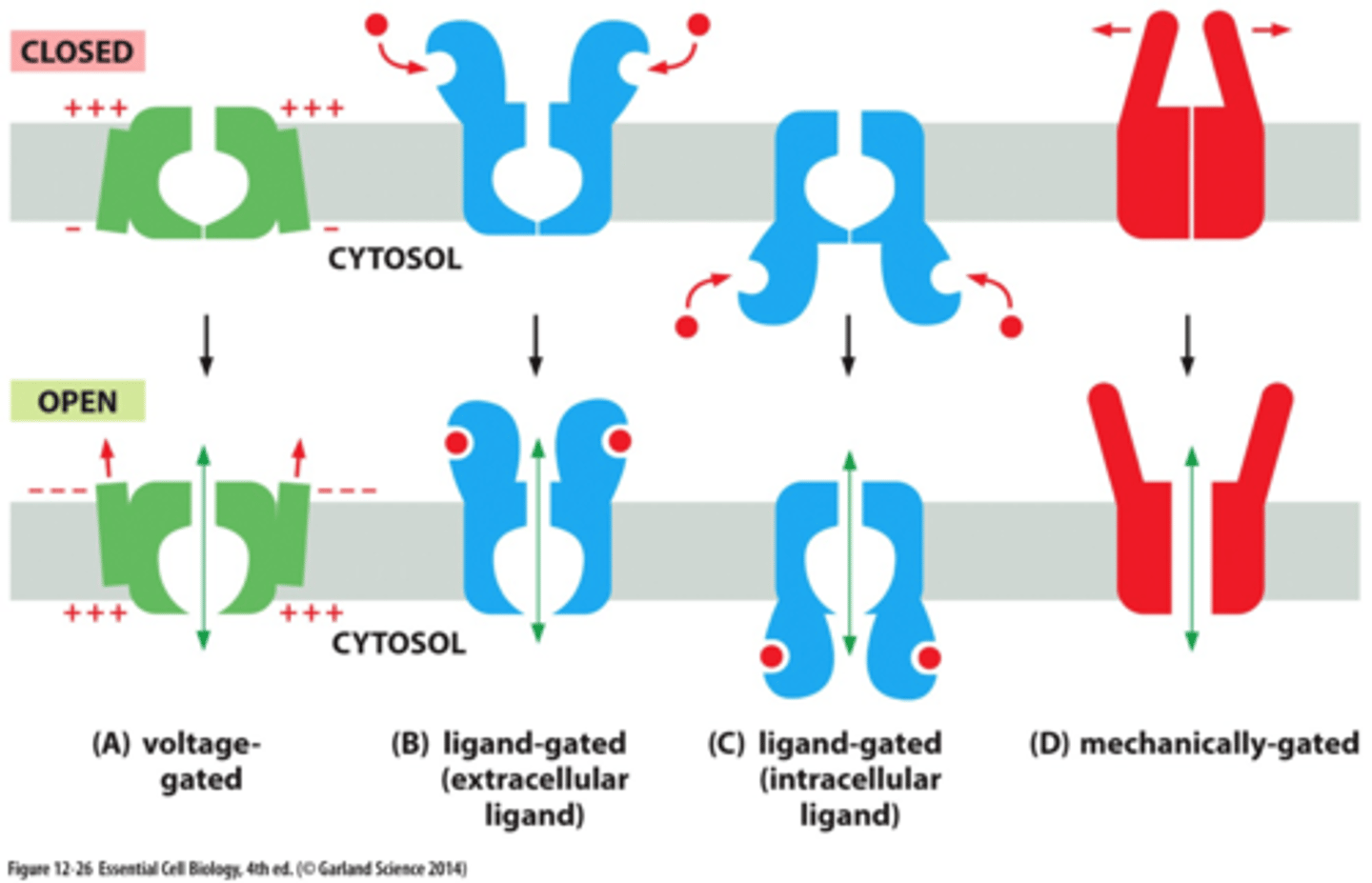AUBIO 230: Topic 4.3 (Membrane Transport-Ion Channels & Membrane potential)
1/29
There's no tags or description
Looks like no tags are added yet.
Name | Mastery | Learn | Test | Matching | Spaced |
|---|
No study sessions yet.
30 Terms
channel proteins (Channels) function
provide a hydrophilic channel that allows small, water soluble substances to pass through the membrane
what do channel proteins (channels) permit and restrict
passive diffusion of water molecules, but restrict the passage of ions
3 types of channels
porins (pores like in mitochondria), aquaporins (for water), gap junctions (linked b/w adj. cells)
2 thins about ion channels
they are selective and gated
Describe how ion channels are selective
-permit certain ions to pass but not others
-separate channels needed for different ions
How is ion channel selectivity determined by
-diameter & shape of ion channel: acts as size filter
-distribution of charged AAs that line the channel: for ion-specific binding
What type of ions can pass through ion channels
only ions of appropriate size and charge
If a channel has more positive charges, what type of ions would pass through?
negative ions, because they would be attracted. positive ions would be repelled
Describe how ion channels are gated
-ion channels are not always open
-only open when triggered by certain stimuli
(fluctuate between closed and open conformations)

What controls membrane potential (difference of charges across membrane)
ion permeability (ability of ions to cross the membrane)
Explain the membrane potential when a) there is an exact balance of charges on either side of the membrane and b) when ions of one type cross the membrane
a) there is no membrane potential ( = zero)
b) they establish a charge difference across the 2 sides of the membranes that creates a nonzero membrane potential

What is the condition about ions that move across the membrane to set up membrane potential?
they are a tiny fraction of all those present on either side because they must be very close to the membrane
What gradient and channels play major parts in generating the resting membrane potential across the plasma membrane in animal cells
K+ concentration gradient and K+ leak channels (ion channels that allow K ions to pass through)

K+ channels closed, what is the membrane potential
-plasma membrane potential = 0 (no net movement of ions)
K+ leak channels open, what is the membrane potential
-PM potential exactly balances the tendency of K+ to leave
-more K inside, so con. gradient drives it outside moving + ions out. But - ions remain, creating a charge gradient. The system forces k+ back to achieve a charge balance
How does permeability of membrane for certain ions control the membrane potential
The K+ concentration gradient and K+ leak channels play major parts in generating the resting membrane potential across the plasma membrane in animal cells
How does permeability of membrane for certain ions control the membrane potential
-K+ leak channels allow K+ to move freely, making the membrane highly permeable to K+
-Na+ pump creates a steep conc. gradient by moving K+ into the cell and Na+ out
-Conc gradient drives K+ out of cell where K+ is lesser, more negative ions remain inside
-this creates a voltage difference/electrical imbalance (membrane potential) where inside is more negative
-the voltage difference opposes the movement of K+ out of the cell to maintain equilibrium
Different types of stimuli
influence the opening and closing of ion channels

Types of stimuli
1. mechanically gated: respond to mechanical movements like touch & mechanical force
2. Ligand-gated (extracellular ligand): binding of chemical ligand to extracellular face of channel determines whether opens or closes
3. ligand-gated (intracellular ligand) :ligand binding to intracellular face of channel
4. voltage gated: imbalance of charges across membrane triggers closure or opening of channel, have V sensor
What do voltage-gated ion channels respond to
membrane potential
voltage-gated ion channels
-help transmit electrical signals in various organisms along nerves, muscle cells, etc.
-voltage sensors in channels detect change in membrane potential
-when voltage change reaches threshold, it triggers the channel to open
-probability of channel opening depends on the membrane potential (10% at rest, 90% when activated)
-opening of one channel cna trigger other channel tpes to open
Which 2 ion channels underlie the leaf-closing response in the touch-sensitive plant Mimosa pudica
mechanically gated (controlled by mechanical stimuli like touch) and voltage-gated ion channels
Explaing how the leaf-closing response in touch-sensitive plants works
-cells have the mechanical gates triggering sensory cells and pass signals to voltage gated cells which causes change at base of this leaf the hinges causing them to close, signal is transmitted, after a while they open.
conformational change for each ion passed in transporters versus ion channels
Transporters: yes, requires shape change for each transport cycle
ion channels: no, ions pass through open channels without conformational changes
Rate of transfer in transporters versus ion channels
transporters: slow (100-1000 ions per sec)
ion channels: fast (millions of ions per sec)
active transport in transporters versus ion channels
Transporters: yes, can move against conc gradient
Ion channels: no, only passive transport down gradient
energy requirement in transporters versus ion channels
transporters: often requires ATP or ion gradients
Ion channels: no direct E requirement
selectivity in transporters versus ion channels
transporters: highly selective, binds specific molecules or ions
ion channels: selective (moderate) but based on size and charge
size of transported molecules in transporters versus ion channels
Transporters: can transport large molecules
ion channels: usually only small ions